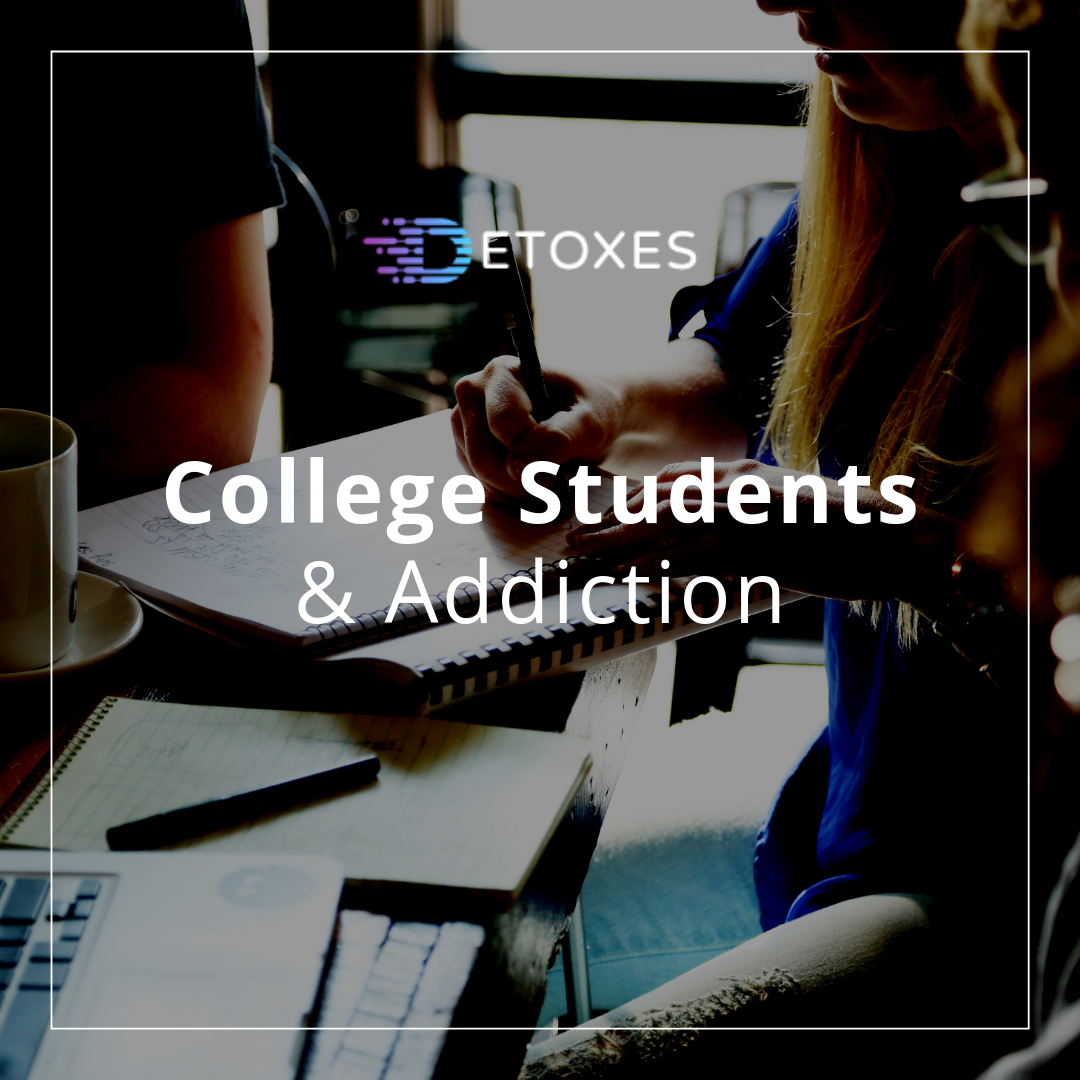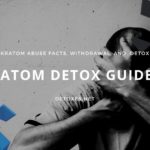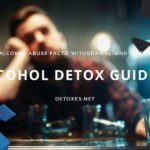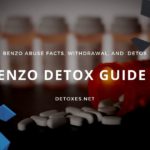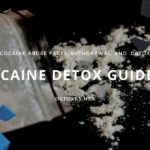College Students & Addiction
College Students and addiction is already a national problem. Now, today’s college students study from PowerPoint slides, groove to the hip-hop of Kendrick Lamar and Drake, and are blissfully ignorant of what a dial-up internet connection is. Things change, but unfortunately, certain things stay the same. As a society, we haven’t gotten past the nagging problem of college students engaging heavily in drugs and alcohol.
This guide will identify the substances most used by 21st-century American college students, with some tools for the students and their families to battle the addictions.
Quick Guide to the Numbers
Before going further, let’s have a quick reference to some of the key numbers related to College Students and addiction. These statistics come from the most prominent report in the field, Monitoring the Future National Survey Results on Drug Use, 1975-20177.
The 2017 numbers are:
Percentage of college students who use:
- any illicit drugs (including prescription drugs without a prescription): 55.5%
- marijuana: 50.6%
- cocaine: 6.6%
- heroin: 0.1%
- amphetamines (methamphetamine, crystal methamphetamine): 12.7%
- alcohol: 79.0%14
Percentage of students who used the following substances within the last thirty days:
- alcohol: 62.0%
- marijuana: 21.3%
- cocaine: 1.3%
- amphetamines: 3.7%
This data shows as the main takeaway, a large increase in the use of illicit drugs, since the percentage of college students using any drug increased 21 percent since 2004.
College Drug Culture
The use of alcohol on a college campus has never been difficult to explain. A high concentration of young people in dorms, off-campus houses, and fraternity and sorority housing is the recipe for heavy drinking. But what about drugs? What makes these prevalent among those on their way to post-secondary degrees? How does this affect College Students and addiction?
To some extent, the communal atmosphere at universities is a factor in the prevalence of the most common college drug, marijuana. It is a drug to be shared, often passed around in the form of a joint or in a marijuana bong. Because the image associated with marijuana includes being cool and laid back, and because it has no stigma that drugs like heroin or meth do, it is fashionable.
Drugs can be seen as a rite of passage as well, part of the exploration of personal freedoms coming from being away from home. In fact, colleges may ironically provide a safe haven for drug use. Young adults are not just away from their parents, but also from their local community, which may include law enforcement that is able to thwart most of the local drug trade.
One drug dealer told studybreaks.com that he feels comfortable selling drugs on campus because the campus security and police aren’t aggressive about going after dealers, asserting that they’re worried about the bad publicity that would come from a drug bust6. Some health professionals have also observed that universities can be reluctant to publicize recovery programs that they may have, lest they make it clear to parents that there’s a drug epidemic at the institution.
College Students and Addiction to Study Drugs
Dr. Bill Ritchey, director of counseling at Christopher Newport University, says we’ve “come to a place in our culture where students will do anything to get the grade.”2
One of the things they’ll do is turn to stimulants that they acquire without prescriptions, such as Adderall and Ritalin. Ritchey says he feels students say “I need this to get through the week.” These drugs are now labeled “study drugs” in the context of universities2.
Oddly and unfortunately, the Monitoring the Future study above didn’t ask students about the use of these drugs. But we do have some indications as to the prevalence of the use of study drugs without prescriptions.
A recent nationwide study that surveyed students in no less than 50,000 colleges and universities showed that nearly 40% of students at institutions in the Northeast used stimulants, while 25% in the Rocky Mountain region had. (This, incidentally, indicates that students at elite schools such as those in the Ivy League are more prone to take these drugs, and therefore, college students here are more prone to addiction.)
The report from Northeastern University cites a doctor from the University of Kentucky, whose study found that roughly 30% of students there used Ritalin or Adderall, and among upperclassmen, the number was 50%, and 80% among upperclassmen in Greek organizations2.
Therefore, we see various reactions to stress on campus. Students seem to use dangerous stimulants to stay focused and handle the workload during the week, and then marijuana to unwind, exacerbating college student addictions.
Now that we’ve gone over the basic and important data, we will provide a guide to the various drugs at play in modern universities and colleges:
College Students and Addiction to Alcohol
As we see from our statistical overview, alcohol is the most abused drug among college students. Seventy-nine percent of students use it at one time or another, according to the Monitoring the Future report that drives our numbers throughout this report7. Thirty-eight percent of college students aged 18-22 have binge drunk in the previous month, according to a 2015 study from the National Institute on Alcohol and Alcoholism17.
We, therefore, know that college drinking is not to any extent contained to a relaxing drink or two or social drinking, but that it has at its center drinking in excess.
Effects on the Body
Alcohol is known as a depressant—depressing inhibitions and dulling senses. This is why one feels a decrease in motor functions and can slur speech or walk unsteadily when drinking.
One reason that a high amount of alcohol is often very dangerous and damaging to college students is the relaxing of inhibition. All too often, students who are very inebriated have sex with people they’re not in a relationship with, sometimes without protection; they may commit rape. Some students damage property or get into fights as well.
Further, intense alcohol consumption dehydrates the body and thus slows important processes. It can, of course, cause hangovers. The hangover is made up of headaches and sluggishness, and can even include dizziness, plus redness of the eyes, inability to sleep, and inability to concentrate.
In addition to negative immediate and short-term effects of alcohol consumption, here are some larger physiological effects of drinking:
- Disruption of the brain’s communication with the body
- Fatty liver – hepatic steatosis is literally too much fat on the surface of the liver and it often happens after days or weeks that include intense bursts of excessive drinking11.
- Alcoholic Hepatitis – This is a serious liver condition that develops upon long-term excessive alcohol consumption18. It is, specifically, inflammation of the liver, and can cause symptoms including fatigue and fever, as well as jaundiced (yellowed) skin13.
- Cirrhosis – This is a result of the above conditions. It involves scarring from these terrible conditions. It takes time for this to develop, but college students who build up a tolerance to alcohol that causes them to drink more to be intoxicated; who think of drinking as part of a good time; and who start developing a psychological addiction to drink are doing their liver and themselves a great disservice13.
- Rapid Pulse – An abnormal heart rate is called atrial fibrillation. When you drink, the alcohol expands blood vessels—since the vessels are stretched a bit, the heart has to pump harder to fill the vessels with blood. This causes the increase in heart rate many feel when drinking. However, environmental factors like stress could cause atrial fibrillation; not only is this serious on its own, but could lead to strokes, particularly among women.
- Nerve damage – A chronic excessive drinker may do permanent damage to one’s nerves. As we know, nerves are the connection between mind and body. Damaged nerves can cause numbness, restricted movement, muscle damage1.
- Weight gain – This is due to the varied ingredients in alcohol, including sugar and sweeteners, wheat, etc.
- Pancreatitis – This disease means that enzymes attack the pancreas. It also includes an increased heart rate, one of many heart issues associated with alcohol. Other symptoms are vomiting and nausea, and major stomach pain that spreads to the back.
- Alcoholic Cardiomyopathy – Alcohol abuse can affect the heart in many ways, including high blood pressure. Rather than listing all the individual maladies, we want the reader to be aware that alcoholism can be very damaging to the heart; one of the single worst conditions is alcoholic cardiomyopathy. This involves a weakened heart with the heart muscle not pumping hard enough.19
- Cancer.
Alcohol abuse is linked to multiple forms of cancer, greatly increasing the risks of several of them3:
- Esophagus
- Mouth and throat
- Voice box
- Colon
- Liver
- Breast
Risk of Dependency
The common conceptions about college students are true, as we’ve seen from the statistics on binge drinking. College students tend to drink to excess. This runs the risk of a dependence, or alcoholism. WebMD defines an “at risk” drinker as a woman who has more than 7 drinks a week, or a man who has more than 1420. A “drink” is defined as 12 ounces of beer, 5 ounces of wine, or 1.5 ounces of hard liquor.
Unfortunately, college students drink much more than this. Drinking too much on a regular basis can lead to a psychological addiction. These involves frequently feeling the need to drink in social situations, to lessen anxiety, to cope with upset, to celebrate, any time a game is on TV, etc. It can involve being angry or depressed when away from alcohol. In 2015, according to the NIAAA, 15.1 million adults in the U.S. suffered these Alcohol Use Disorder symptoms20.
This in turn leads to a physical dependency. At this stage, the user will drink more and more because of a tolerance. It is then that withdrawal symptoms can pop up if drinking is reduced. Severe withdrawals happen when one goes without for as little as twelve hours.
College Students and Addiction to Marijuana
Not counting alcohol, marijuana is by far the drug of choice for college students. It is easy to obtain at little expense, and is touted to be non-addictive and impossible to overdose on.
Effects on the Body and Mind
The Center for Disease Control reports that in the short-term, marijuana can have negative impacts on a user’s memory, attention span, ability to focus; even on one’s relationships5. We get another look into the mental effects of THC (the active ingredient in marijuana) from drugabuse.gov, which explains that several longitudinal studies “suggest that marijuana use can cause functional impairment in cognitive abilities but that the degree and/or duration of the impairment depends on the age when a person began using and how much and how long he or she used.”
A major report from the National Academies of Science Engineering and Medicine states that marijuana use can increase suicidal thoughts and social anxiety disorder15. It can also increase symptoms of bipolar disorder for people who already have it.
As for memory, not only is it widely believed that marijuana does have negative effects, but there is experimental evidence that corroborates it. The hippocampus is the part of the brain responsible for memory12. A 2016 study published in Translational Psychiatry found that the volume of this small brain organ was reduced among participants who’d had heavy marijuana use21.
A few other things to keep in mind regarding marijuana:
- It can decrease motivation and cause listlessness.
- It can alter a person’s apprehension of time.
- It contains more than 500 chemicals.
- It can cause medications—such as antivirals—to not work as well.
The biggest thing to keep in mind is that many problems or dangers associated with marijuana aren’t triggered until it is used in relatively-large quantities for a long time. All too often, people are lulled into a belief that the substance is benign because after a short period of time, they’ve had no real problems.
College Students and Addiction to MDMA (Ecstasy, Molly)
MDMA is socially quite different from marijuana and some other substances. It isn’t a drug that most college students take in solitude or while studying. It is known for making people feel intense physical sensations, which is why it is known that people hug and cuddle and have sex under the influence of MDMA. It is a highly social drug and a party drug.
This is due to the fact that MDMA works on brain chemicals responsible for energy, excitement, a sense of well-being and trust, and pleasure. Norepinephrine, dopamine, serotonin, are all greatly increased during the drug’s use.
A Monitoring the Future survey showed only roughly 1% of college students having used MDMA in the previous month—an encouraging trend7. Yet, even occasional use of this powerful substance is discouraging.
The dangers of MDMA include sweating or chills, blurred vision, muscle cramping, nausea. It can be detrimental to one’s mood, with the joy and carefree feelings boomeranging to feelings of irritability or depression, with a likelihood of decreased pleasure from sex when off the drug8.
College Students and Addiction to Methamphetamine
When you hear words or phrases like “crank,” “crystal,” “crystal meth” or “glass” you are hearing about methamphetamine in one form are another. These are one variety of the larger group of drugs, amphetamine.
As we see above, 12.7% of college students have admitted to using this drug. If you peek into a classroom that has about 20 students, on average, 2 students in this class have used this substance. That is something to reckon with, due to the seriousness of methamphetamine.
Meth usually comes in an off-white or beige powder. If it is closer to beige, it is less “pure” and more adulterated with additives. This is, strictly speaking, what people are referring to when they say “crank,” even though the various relevant terms become confused and misapplied. While some people mistakenly call the powder “crystal meth,” that term is really for a more solid form that looks like shards of glass, and gets the nickname “glass.” This form is more pure and expensive.
The uptick of use among college students may come from its overall prevalence and its great increase overall. A New York Times article describes meth as the easiest drug to get in Portland, OR, and many poor, rural towns are known as major hubs of the stimulant’s production16.
College students sometimes take the drug in its capsule form, not requiring a pipe for smoking or a needle for injecting, heroin-style. The other common way of intaking the drug is snorting.
While probably most used at parties, meth is sometimes used by college students as an alternative to stimulants like Adderall or Ritalin. A student pulling an all-nighter before a final may turn to this dangerous drug.
Effects on the Body
Because meth is a stimulant, it can produce a stimulants’ dangerous effects, such as increased blood pressure and heart rate. An irregular heart rate is a big risk as well.
It’s important to realize that meth is highly addictive, as is any stimulant. Because the euphoric effects decrease after repeated use, the user takes more and more, causing physical dependence. At this point, the user will suffer notable impacts, such as loss of appetite and weight loss, irritability, intense nervousness, paranoia, and even hallucinations9. People in this state are probably gaunt and extremely thin, with unhealthy hair. A worse symptom, meth mouth, involves rotted teeth, a condition that won’t present itself until a person’s addiction is full-blown.
The thing to keep in mind with meth is that, like heroin or cocaine, it is best to never start it, because a powerful, unforgiving habit can easily begin.
A December 2018 CDC report gives the shocking news that 6,762 people died in 2016 from methamphetamine use4.
College Students and Addiction to Opioids
Opioids, used for pain, are a prime example of prescription drugs obtained without a prescription and used for the wrong purpose. They include oxycodone, Vicodin (hydrocodone), fentanyl, morphine, and codeine.
It isn’t uncommon for students to crush pills into powder and then snort it, which speeds up the drug’s workings. Many students can justify the use of these drugs since they are prescribed by doctors. The euphoria they cause can feel “clean,” meaning the person doesn’t necessarily feel groggy or out of sorts.
The cultural significance of various drugs can’t be underestimated. Branding and what certain activities say about a person is a huge part of our culture. Many students don’t get to the point of one drug leading to another to another and getting to “street” drugs like cocaine or crystal meth; but little pills from a bottle that are taken just like over-the-counter headache pills don’t cause a stigma or cause students to ask themselves what they’re doing.
Dangers
Outside of the obvious use of addiction and a physical dependency, prescription painkillers present further dangers. These medications are dangerous when mixed with the alcohol that is ever-present among college students. In extreme examples, these powerful pain killers can slow the heart rate and breathing to the point of danger.
One alarming recent discovery is that heroin use was nineteen times higher among young users who had previously used prescription opioids10. Heroin is technically an opioid and is much stronger, more addictive, and deadlier than the prescription forms listed here.
References
- Allen, S., & Boskey, E. Healthline. (2016). The Aftereffects of Alcoholism: Alcoholic Neuropathy. Retrieved February 25, 2019 from https://www.healthline.com/health/alcoholism/alcoholic-neuropathy#symptoms.
- Aziz. N. Northeastern University. (2016). Why Are College Students Relying on Study Drugs? Explaining the Dynamics. Retrieved February 25, 2019 from http://www.northeastern.edu/rugglesmedia/2016/04/21/why-are-college-students-relying-on-study-drugs/
- Centers for Disease Control and Prevention. (2019). Alcohol and Cancer.. Retrieved February 25, 2019 from https://www.cdc.gov/cancer/alcohol/index.htm
- Centers for Disease Control and Prevention. (2018). Drugs Most Frequently Involved in Drug Overdose Deaths: United States, 2011-2016. Retrieved February 25, 2019 from https://www.cdc.gov/nchs/data/nvsr/nvsr67/nvsr67_09-508.pdf
- Centers for Disease Control and Prevention. (2019). Marijuana: How Can it Affect Your Health?. Retrieved February 25, 2019 from https://www.cdc.gov/marijuana/health-effects.html
- Chan Hodges, L. StudyBreaks (2017). Drug Use on Campus, According to the Dealers. Retrieved February 25, 2019 from https://studybreaks.com/college/drug/.
- National Institute on Drug Abuse. (2018). College-Age & Young Adults. Retrieved February 25, 2019 from https://www.drugabuse.gov/related-topics/college-age-young-adults.
- National Institute on Drug Abuse. (2018). MDMA (Ecstasy/Molly). Retrieved February 25, 2019 from https://www.drugabuse.gov/publications/drugfacts/mdma-ecstasymolly.
- National Institute on Drug Abuse. (2018). Methamphetamine. Retrieved February 25, 2019 from https://www.drugabuse.gov/publications/drugfacts/methamphetamine.
- National Institute on Drug Abuse. (2018). Prescription opioid use is a risk factor for heroin use. Retrieved February 25, 2019 from https://www.drugabuse.gov/publications/research-reports/relationship-between-prescription-drug-heroin-abuse/prescription-opioid-use-risk-factor-heroin-use.
- Healthline. (2019). Everything You Need to Know About Fatty Liver. Retrieved February 25, 2019 from https://www.healthline.com/health/fatty-liver.
- Mandal, A. News Medical. (2019). Hippocampus Functions. Retrieved February 25, 2019 from https://www.news-medical.net/health/Hippocampus-Functions.aspx.
- Mayoclinic. (2018). Alcoholic hepatitis. Retrieved February 25, 2019 from https://www.mayoclinic.org/diseases-conditions/alcoholic-hepatitis/symptoms-causes/syc-20351388.
- Monitoring the Future. (2017). National Survey Results on Drug Use 1975-2017. Retrieved February 25, 2019 from http://www.monitoringthefuture.org/pubs/monographs/mtf-vol2_2017.pdf.
- National Academies Press, The. (2017). The Health Effects of Cannabis and Cannabinoids. The Current State of Evidence and Recommendations for Research. Retrieved February 25, 2019 from https://www.nap.edu/catalog/24625/the-health-effects-of-cannabis-and-cannabinoids-the-current-state.
- Robles, S. New York Times (2018). Meth, the Forgotten Killer, Is Back. And It’s Everywhere. Retrieved February 25, 2019 from https://www.nytimes.com/2018/02/13/us/meth-crystal-drug.html.
- Substance Abuse and Mental Health Services Administration (SAMHSA). (2015). National Survey on Drug Use and Health (NSDUH). Table 6.84B—Tobacco Product and Alcohol Use in Past Month among Persons Aged 18 to 22, by College Enrollment Status: Percentages, 2014 and 2015. Retrieved February 25, 2019 from. https://www.samhsa.gov/data/sites/default/files/NSDUH-DetTabs-2015/NSDUH-DetTabs-2015/NSDUH-DetTabs-2015.htm#tab6-84b.
- Vozzo, C.F., Welch, N., Romero-Marrero, C., & Fairbanks, K.D. (2018). Alcoholic Liver Disease. Retrieved February 25, 2019 from http://www.clevelandclinicmeded.com/medicalpubs/diseasemanagement/hepatology/alcoholic-liver-disease/
- WebMD (2017). What is cardiomyopathy?. Retrieved February 25, 2019 from https://www.webmd.com/heart-disease/heart-failure/qa/what-is-cardiomyopathy.
- WebMD (2017). What is Alcohol Use Disorder?. Retrieved February 25, 2019 from https://www.webmd.com/mental-health/addiction/what-is-alcohol-abuse#1.
- Yücel, M, Lorenzetti, V, Suo, C, Zalesky, A, Fornito, A, Takagi, M J,Lubman, D I, & Solowij, N. NCBI. (2016). Hippocampal harms, protection and recovery following regular cannabis use. Translational Psychiatry
Medically Reviewed: September 25, 2019

All of the information on this page has been reviewed and verified by a certified addiction professional.


